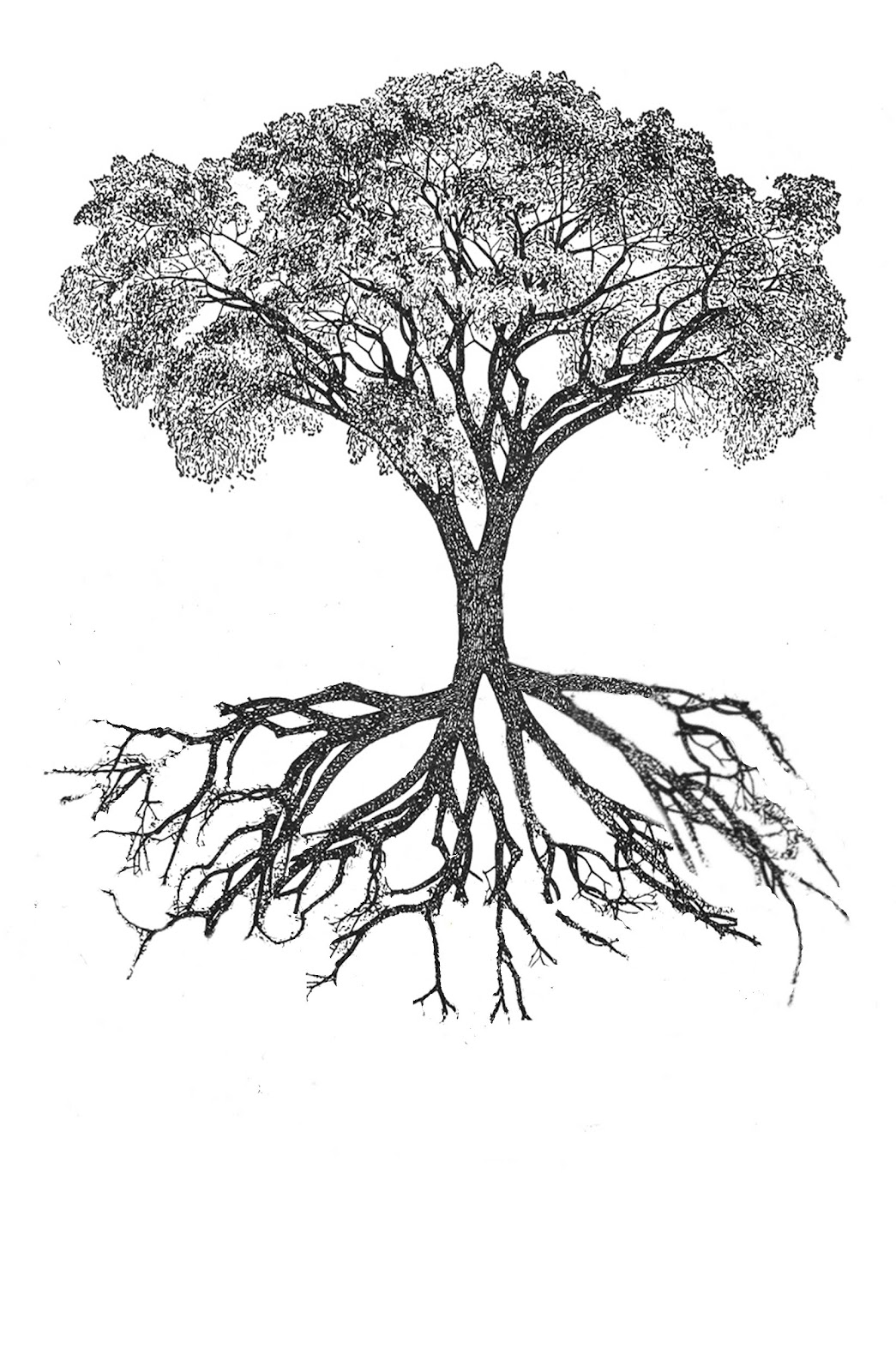
Botany Professor The "root" of the root problem
3.3 Roots. Though unseen, the roots of a plant also have specialist anatomical features that enable plants to efficiently obtain nutrients and control the substances entering a plant. Figure 3.9. Diagram of the structures of and areas of a developing root. (Image from: Marsland, Douglas. (1964) Principles of modern biology.
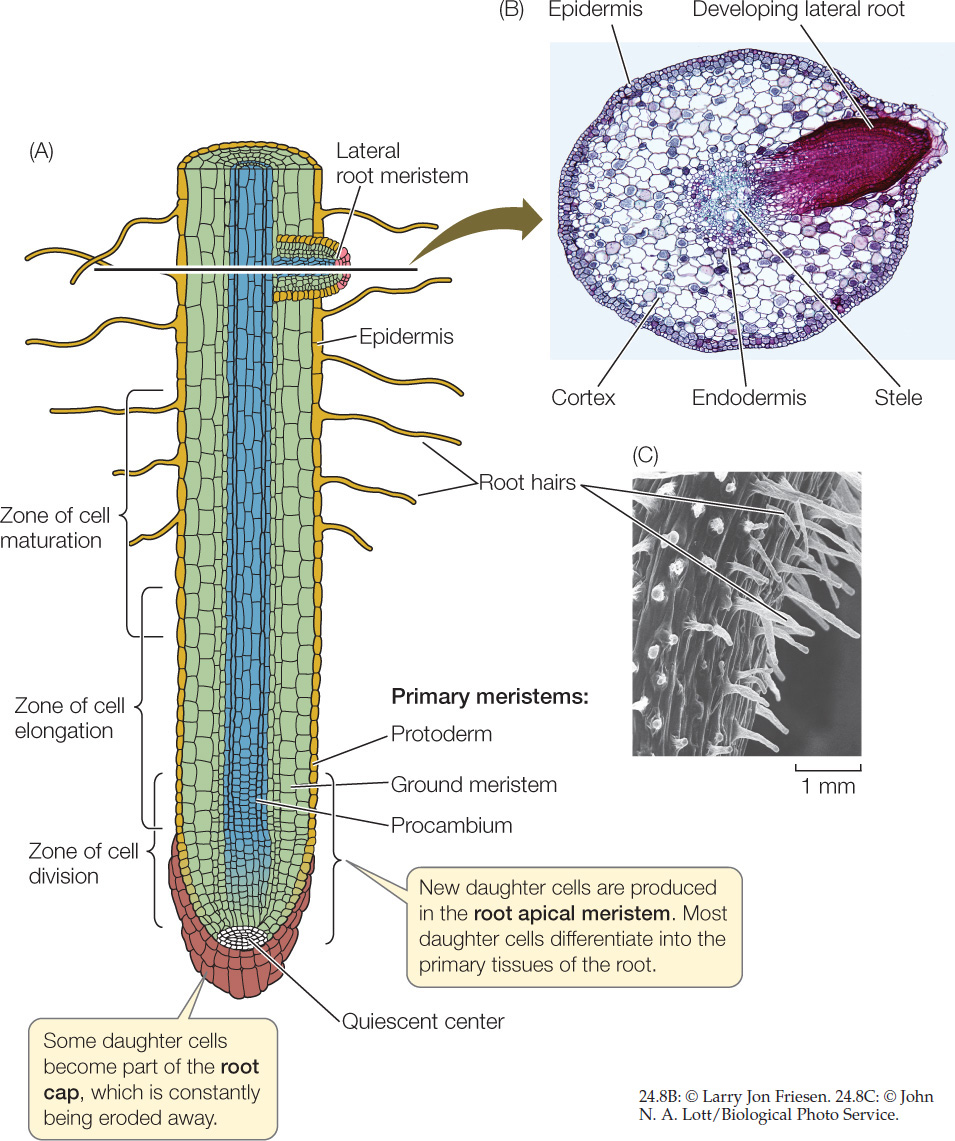
hillis2e_ch24
Root Systems. There are two basic types of root systems in plants: taproot systems and fibrous rootsystems. Both are illustrated in Figure below.. Taproot systems feature a single, thick primary root, called the taproot, with smaller secondary roots growing out from the sides.The taproot may penetrate as many as 60 meters (almost 200 feet) below the ground surface.

Root Cause Tree Diagram My XXX Hot Girl
We can see the root cap in the diagram below. Primary Roots. Directly behind the root cap is the root meristem, which is where cell division occurs. This means that when the root grows, the new.

25 Root Structure And Growth Worksheet Answers Worksheet Project List
Typical Root: Part # 1. Root Cap: It is a thimble-shaped or cap-like parenchymatous multicellular structure which covers the root meristem. The cells of the root cap secrete mucilage. The latter lubricates the passage of root through the soil. Without it, the tender root would be unable to penetrate the hard soil.

diagram of root tip KalumKatrian
The Root: Regions and Functions (With Diagram) Article Shared by ADVERTISEMENTS: In this article, we propose to discuss about the various regions and functions of the root. The root is the descending portion of the plant axis. As opposed to the stem, it is positively geotropic, negatively phototropic and positively hydrotropic.
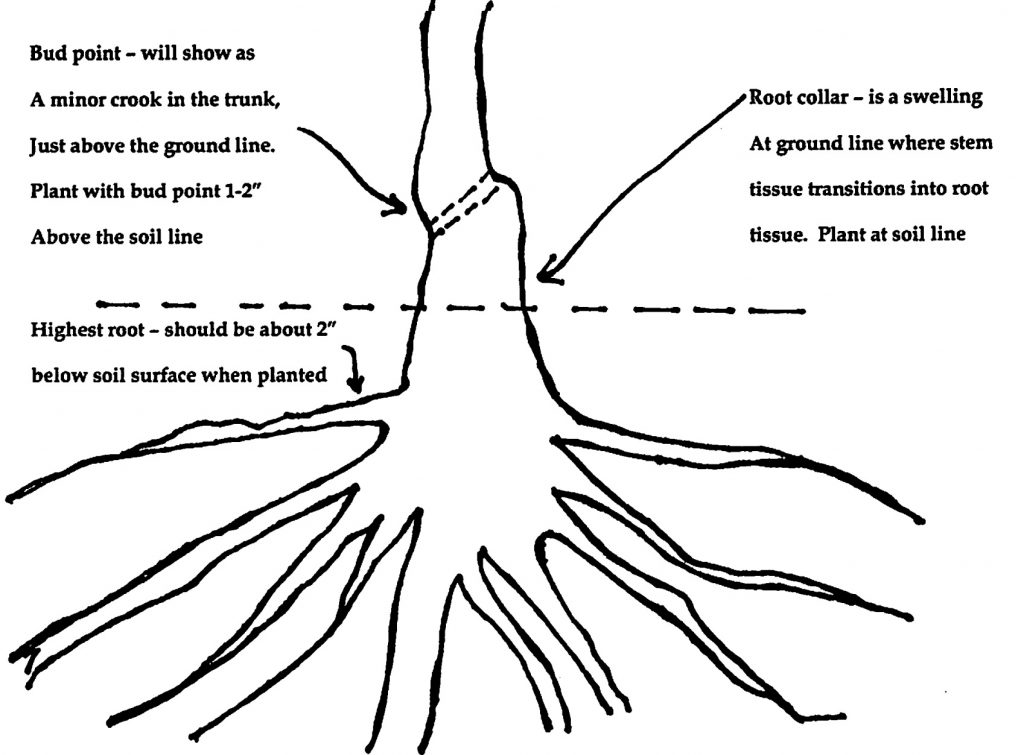
Bare root planting guide Wells Medina Nursery
Do Check: Tap Root Diagram Fibrous Root System Fibrous roots, on the other hand, are bushy roots in which thin, moderately branching roots grow from the stem. Rice, wheat, maize, marigold, banana and all monocotyledons are some examples of the fibrous root system. Also Read: Anatomy of Monocot and Dicot Plants

Diagram showing internal root structure Royalty Free Vector
Internal Structure of Root (With Diagrams) Article Shared by ADVERTISEMENTS: The below mentioned article provides an outline of the internal structure of root. The root develops from the radicle of the embryo.
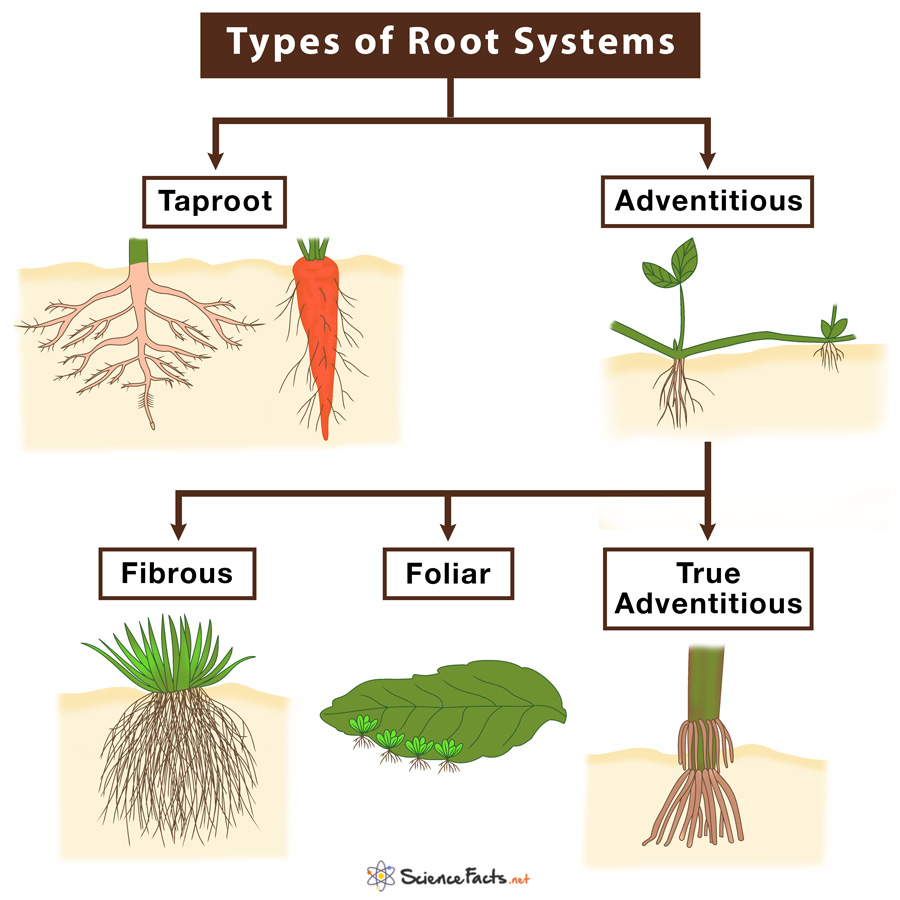
Types of Roots With Examples and Diagrams
Most of the root is composed of cortex tissue, and the endodermis, the innermost layer of the cortex, borders the stele. The outer layer of the root (external to the cortex) is the epidermis. Figure 3.2.3. 4: Eudicot root cross section. From center out, the xylem (in red) make an X, and the side tissues (green) make up the phloem..
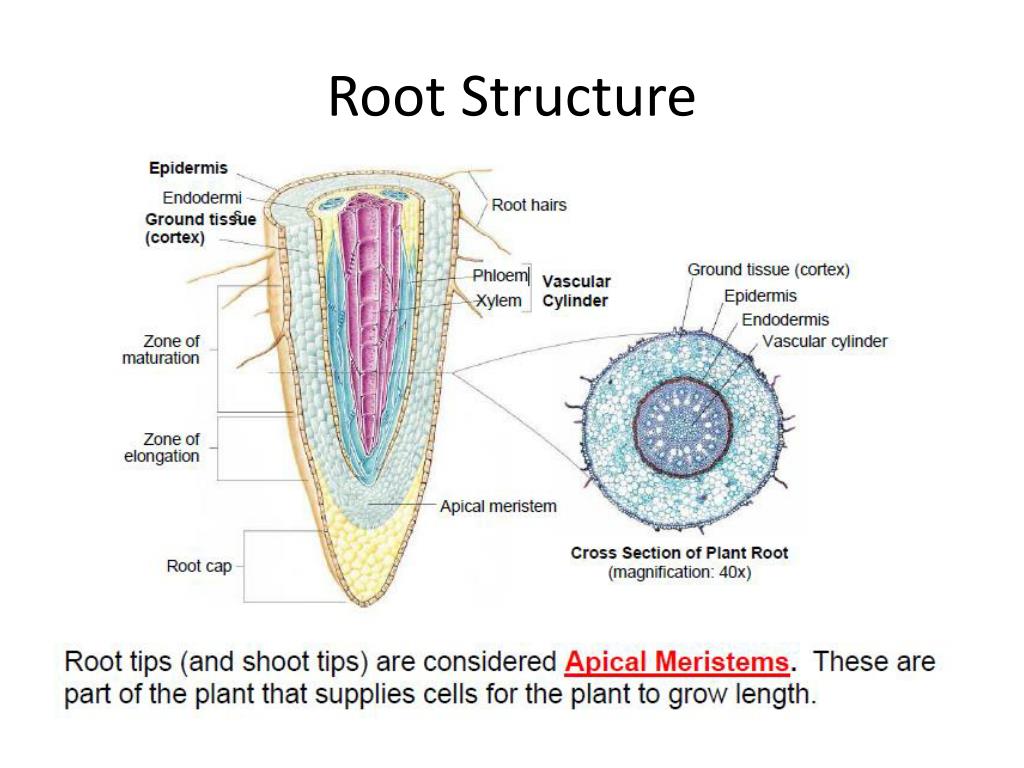
PPT Plants Structure and Function PowerPoint Presentation, free download ID776144
For instance, the anatomy of the root system reveals its various roles in storage, anchorage, and the acquisition and transport of nutrients and water. Because of this, the study of anatomy has much to tell us about the physiology of plants. Plant anatomy and morphology are critical components of nutrient acquisition and transport.
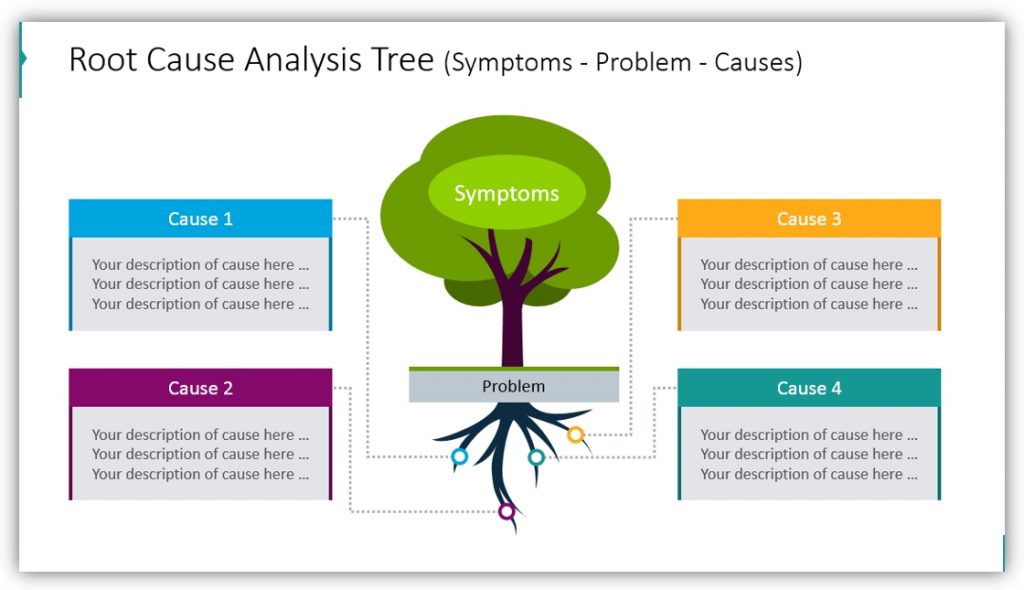
tree_1 Blog Creative Presentations Ideas
The root structure usually includes a root cap that protects the root as it grows, and root hairs sprout from the main roots epidermis, or outer "skin" layer, which aid in the acquisition of water.
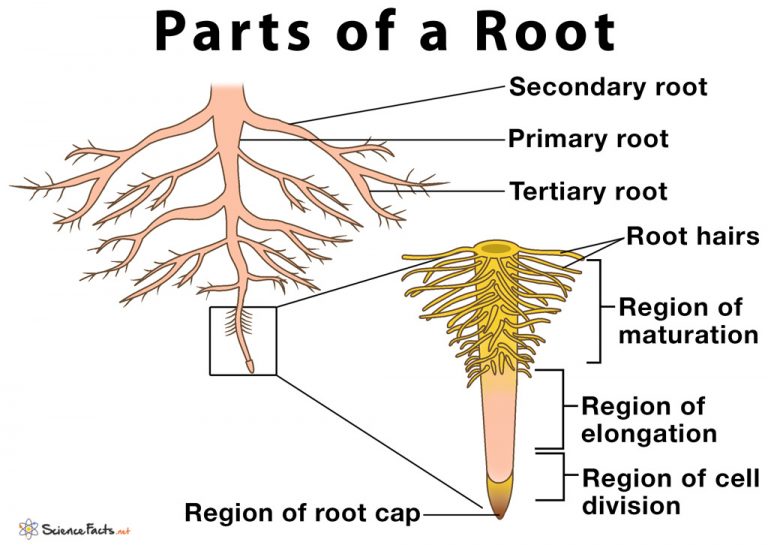
Life Science Page 3 of 34 Science Facts
Parts of a Root 1) The Region of Root Cap The tip of the root is protected by a multi-cellular (more than one cell) structure called root cap. The cells of the root cap are always in a state of division, thus constantly renewing and growing in number as the root penetrates the soil. Functions Carrying water and minerals from the soil
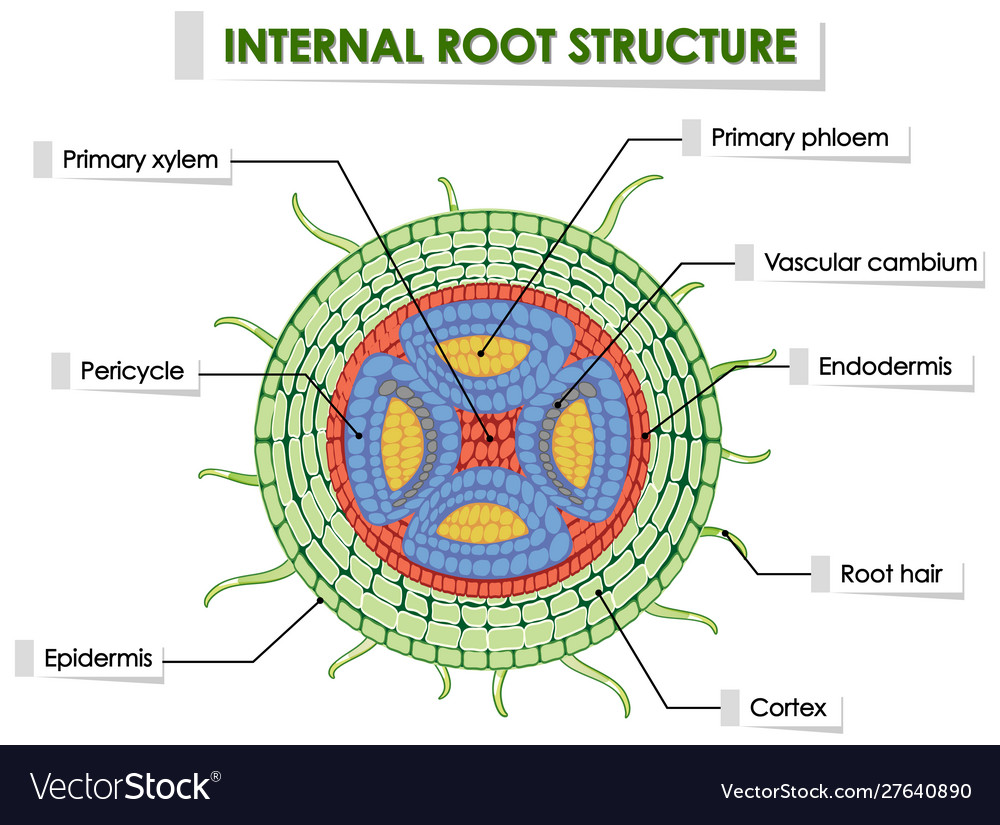
Diagram showing internal root structure Royalty Free Vector
Taproots. Figure 11.3.1 11.3. 1: The carrot vegetable we eat is the taproot of a carrot plant. The large, central root (what we call a carrot) is a taproot and has many much smaller lateral roots that emerge from the sides. These are not root hairs, which would appear more like a microscopic fuzz at the ends of these lateral roots.
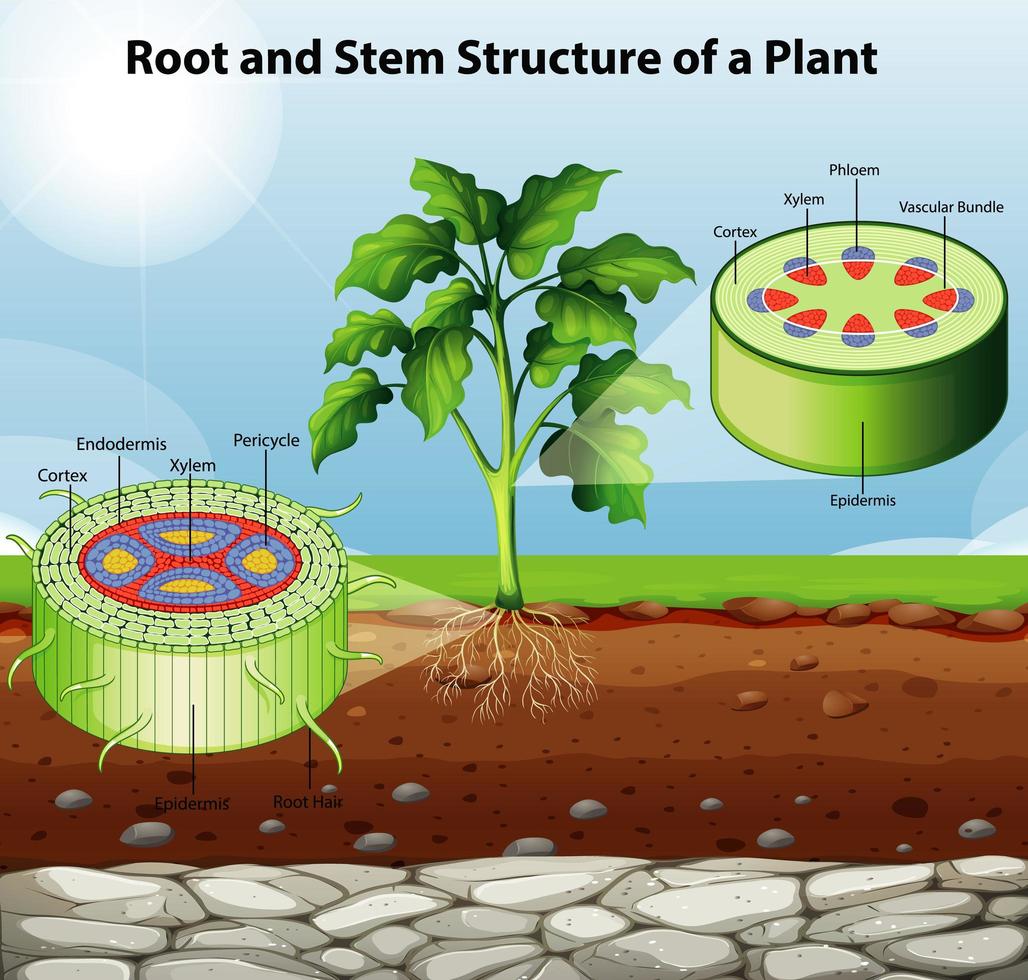
Plant Root and Stem Diagram 1132892 Vector Art at Vecteezy
This area of meristematic activity is called the zone of division. Figure 7.3.1 7.3. 1: Zone of division. As you move up in the root, the cells begin to get larger, developing into primary tissues. This region is called the zone of elongation. Figure 7.3.2 7.3. 2: Zone of elongation.

Diagram of Root Cause Analysis with keywords. EPS 10 Stock Vector Image & Art Alamy
When examining a diagram of the root system, one can observe its hierarchical organization. The primary root, or the first root to emerge from the seed, is the main axis from which all other roots branch. Secondary roots sprout laterally from the primary root, forming a network of roots that reach out in various directions.

Aggregate more than 64 root hair cell diagram super hot in.eteachers
ROOT ANATOMY: DICOT ROOT CROSS SECTION Dicot Root Diagram Reveals Internal Structure of Dicot Root. A thin transverse section of the young dicot root of Gram, Sunflower or Pea reveals the following structures under the microscope: 1. Epiblema or Piliferous Layer. This is the outermost layer of root-derived from the protoderm of the apical meristem.

Types of Root System... [OUTDATED] YouTube
Monocot roots are fibrous, meaning they form a wide network of thin roots that originate from the stem and stay close to the surface of the soil. In contrast, dicots have "taproots," meaning they form a single thick root that grows deep into the soil and has smaller, lateral branches. 2. Monocot and dicot roots contain multiple tissue.